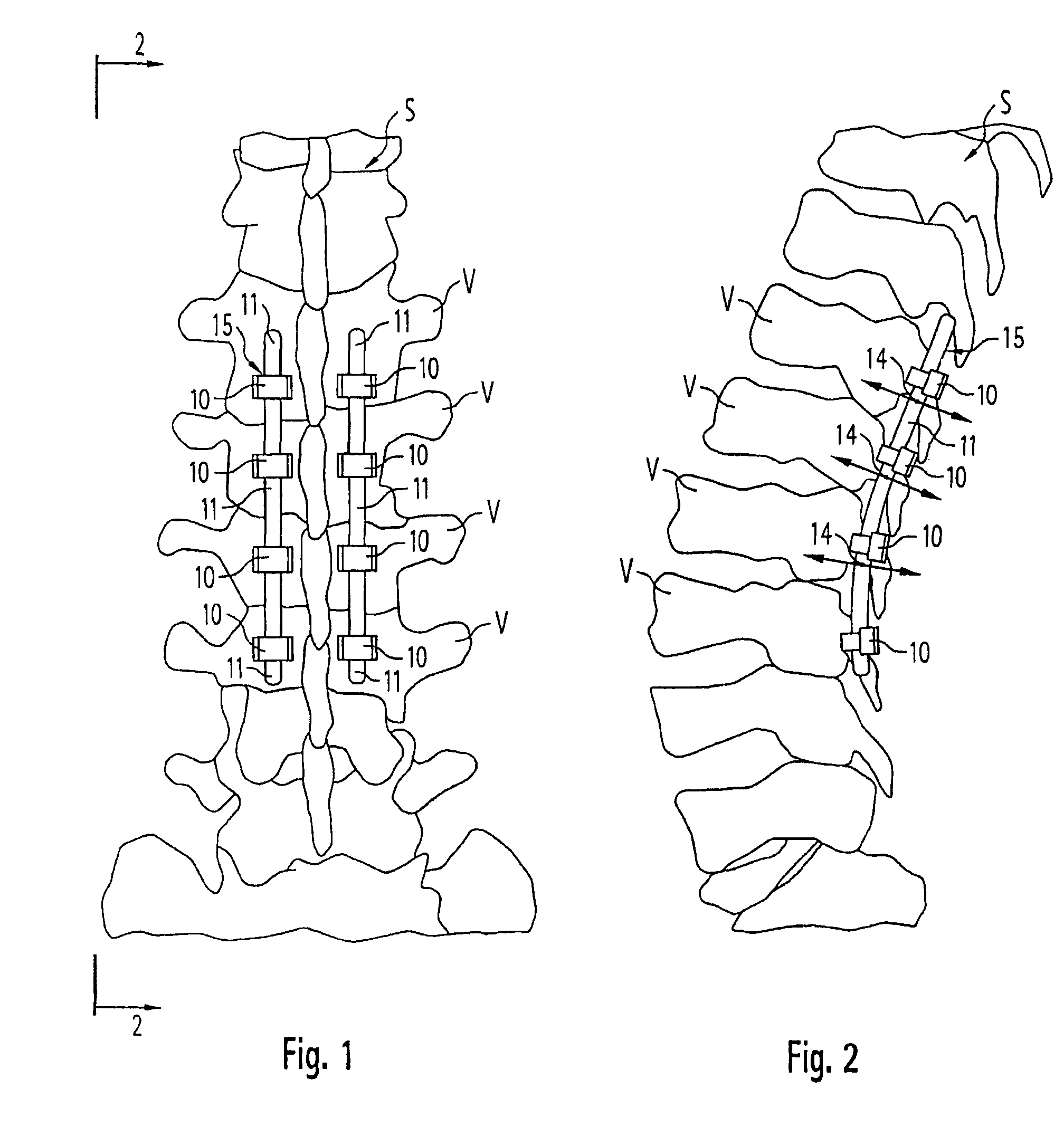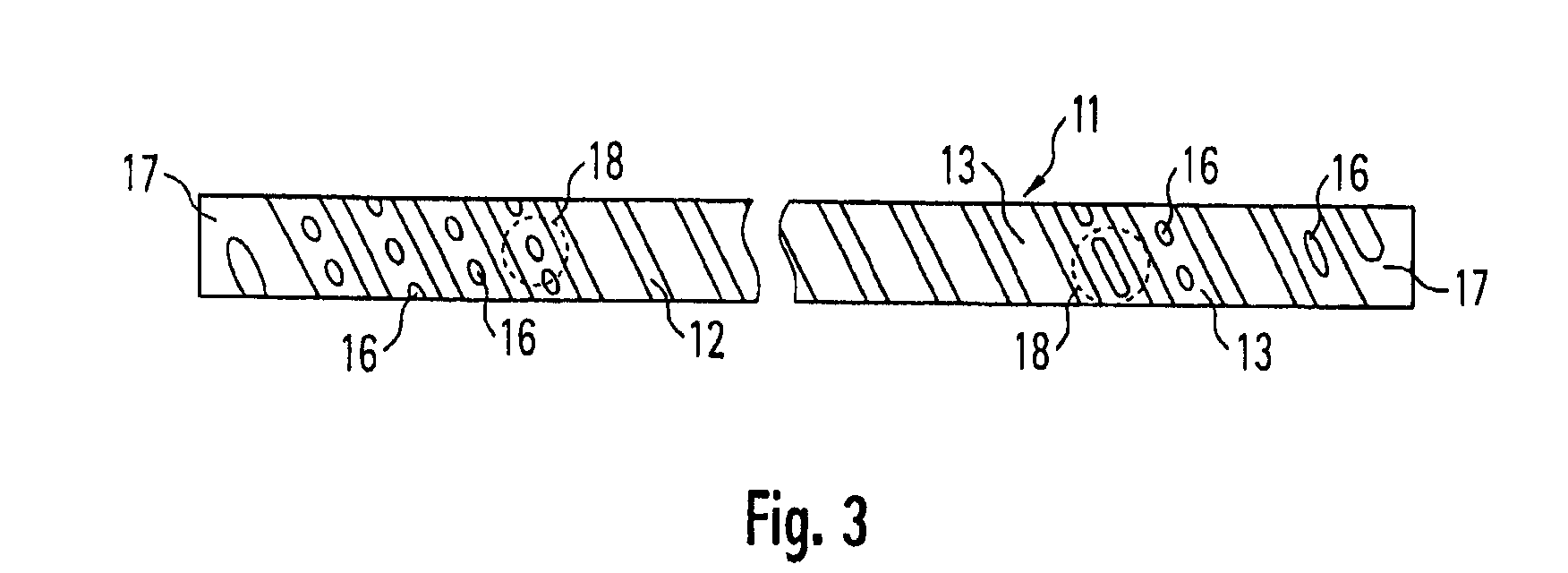Device for dynamic stabilization of bones or bone fragments
a dynamic stabilization and bone technology, applied in the field of dynamic stabilization devices of bones or bone fragments, can solve the problems of implant looseness, obvious disadvantages, and conventional biocompatible plastics materials, and achieve the effects of reducing the load, reducing the load on the injured, and allowing certain flexibility of movemen
- Summary
- Abstract
- Description
- Claims
- Application Information
AI Technical Summary
Benefits of technology
Problems solved by technology
Method used
Image
Examples
Embodiment Construction
[0101]FIGS. 1 and 2 show part of a spine, reference letter “V” denoting the individual vertebra. Reference letter “S” denotes the spine. While the stabilization system is shown and described with reference to its use for spiral applications, it is understood and contemplated that the stabilization system may have applications in other areas of the body and in animals.
[0102]The individual vertebra “V” have been stabilized posteriorly; more specifically, for that purpose pedicle screws have been screwed into four vertebrae “V” from the posterior direction. The heads of the screws 10 each have accommodation apertures or accommodation slots or openings for accommodating a rod-shaped longitudinal member 11. The longitudinal member 11 is, as can be seen especially from the further figures, of generally round rod-shaped construction and is fixed by clamping in the heads of the pedicle screws 10. In that manner, a spine segment having four vertebrae “V” can be stabilized. The longitudinal m...
PUM
 Login to view more
Login to view more Abstract
Description
Claims
Application Information
 Login to view more
Login to view more - R&D Engineer
- R&D Manager
- IP Professional
- Industry Leading Data Capabilities
- Powerful AI technology
- Patent DNA Extraction
Browse by: Latest US Patents, China's latest patents, Technical Efficacy Thesaurus, Application Domain, Technology Topic.
© 2024 PatSnap. All rights reserved.Legal|Privacy policy|Modern Slavery Act Transparency Statement|Sitemap



